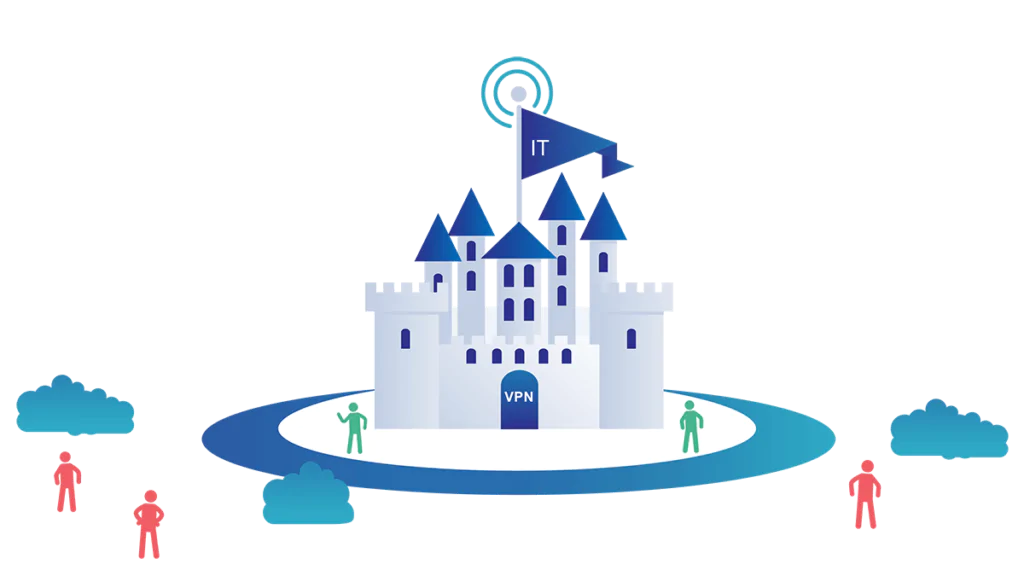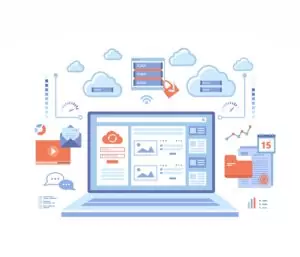
The Tale of the Big Breach: Why We Advocate for Zero Trust Networks
The Tale of the Big Breach: Why We Advocate for Zero Trust Networks 🔐 A few years ago, a prominent company (let’s call them TechCorp)

The Tale of the Big Breach: Why We Advocate for Zero Trust Networks 🔐
A few years ago, a prominent company (let’s call them TechCorp) believed they had top-notch cybersecurity. They invested heavily in perimeter defenses, ensuring that all external accesses were heavily guarded. However, they operated on an implicit trust model within their network.
One day, a seemingly innocuous email landed in an employee’s inbox. It looked like an internal memo with a link to a document. The employee, trusting its source, clicked the link. Unbeknownst to them, this simple action triggered a malware download, giving hackers a foothold inside the ‘secure’ network.
Over time, these hackers moved laterally within the network, gaining access to more and more sensitive data. Since the internal systems were built on trust, the malicious activities went unnoticed until it was too late. TechCorp suffered a significant data breach, resulting in financial losses, a tarnished reputation, and regulatory repercussions.
The painful lesson? Trusting any entity, whether inside or outside the network, can be costly. If TechCorp had implemented a Zero Trust model, where every access request was continuously verified regardless of its source, the breach could have been prevented.
This story isn’t unique to TechCorp. Many organizations have learned the hard way that in the realm of cybersecurity, it’s always better to “trust, but verify” – continuously.
🌐 In today’s digital age, with threats lurking in every corner, adopting a #ZeroTrust approach isn’t just recommended; it’s essential.
The TechCorp incident serves as a stark reminder of the evolving cyber landscape. In the past, companies felt secure with fortified external defenses, likened to impenetrable castle walls. However, as the TechCorp breach illustrates, once the walls are breached, everything inside is vulnerable.
Today, we exist in a digital realm where boundaries are blurred. Employees access company data from coffee shops, airports, and their living rooms. With the proliferation of mobile devices, Internet of Things (IoT) gadgets, and cloud technologies, the perimeter has become indefinable. Hence, relying solely on traditional security measures is akin to locking the front door but leaving the windows open.
Zero Trust is not just a technology solution; it’s a mindset shift. It acknowledges that threats can come from any direction – be it external hackers or internal employees, intentionally or accidentally. By challenging and verifying every access request, irrespective of its origin, Zero Trust ensures that only legitimate users get access, and even then, only to what they genuinely need.
In conclusion, as we navigate this interconnected world, it’s imperative to be proactive, not reactive. Embrace Zero Trust, stay vigilant, and remember that in cybersecurity, the only constant is change. By doing so, we not only protect our data but also ensure the longevity and reputation of our businesses and personal digital identities.

The Tale of the Big Breach: Why We Advocate for Zero Trust Networks 🔐 A few years ago, a prominent company (let’s call them TechCorp)

How to backup SharePoint online Do you remember the time when you had that big, noisy box at your office that cost thousands of dollars

5 ways to protect your privacy online Share on facebook Share on twitter Share on linkedin Online privacy and cyber security How good were you

Quick steps to register .AU domain Login to your account Login to your account and go to Domains menu at the top Register the domain Just

This update introduces 3CX Progressive Web App support for the Web Client. This new technology supported by both Chrome and Edge, offers an app-like experience without installing a full